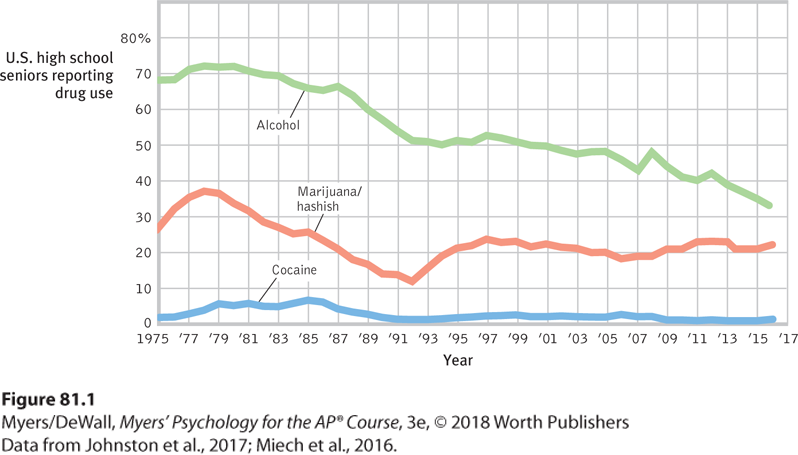Module 81 Influences on Drug Use

Drug use by North American youth increased during the 1970s. Then, with increased drug education and a more realistic and deglamorized media depiction of taking drugs, drug use declined sharply (except for a small rise in the mid-1980s). After the early 1990s, the cultural antidrug voice softened, and some drugs for a time were again glamorized in music and films. Consider, for example, historical trends in the use of marijuana:
- In the University of Michigan’s annual survey of 15,000 U.S. high school seniors, the proportion who said there is “great risk” in regular marijuana use rose from 35 percent in 1978 to 79 percent in 1991, then retreated to 31 percent in 2016 (Johnston et al., 2017).
- After peaking in 1978, marijuana use by U.S. high school seniors declined through 1992, then rose, but has recently been holding steady (see Figure 81.1). Among Canadian 15- to 24-year-olds, 23 percent report using marijuana monthly, weekly, or daily (Health Canada, 2012).

Figure 81.1 Trends in drug use
The percentage of U.S. high school seniors who said they had used alcohol, marijuana, or cocaine during the past 30 days largely declined from the late 1970s to 1992, when it partially rebounded for a few years.
For some adolescents, occasional drug use represents thrill seeking. Yet why do some adolescents, but not others, become regular drug users? In search of answers, researchers have engaged biological, psychological, and social-cultural levels of analysis.